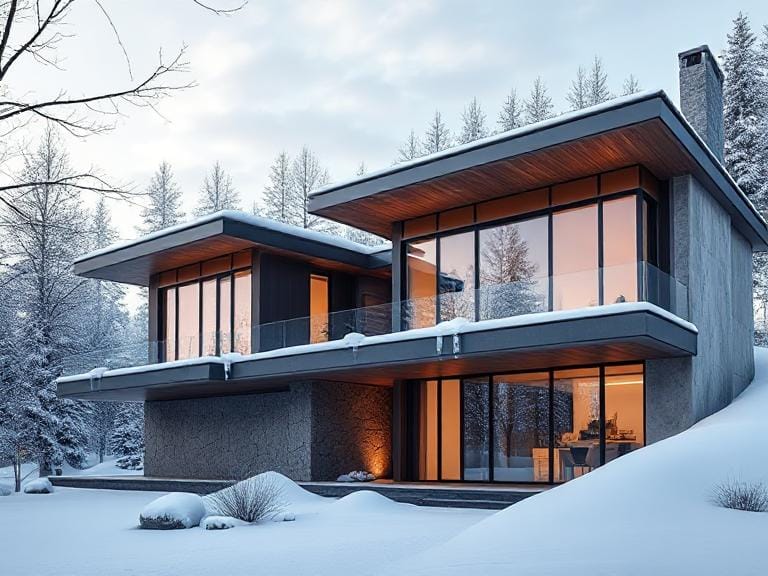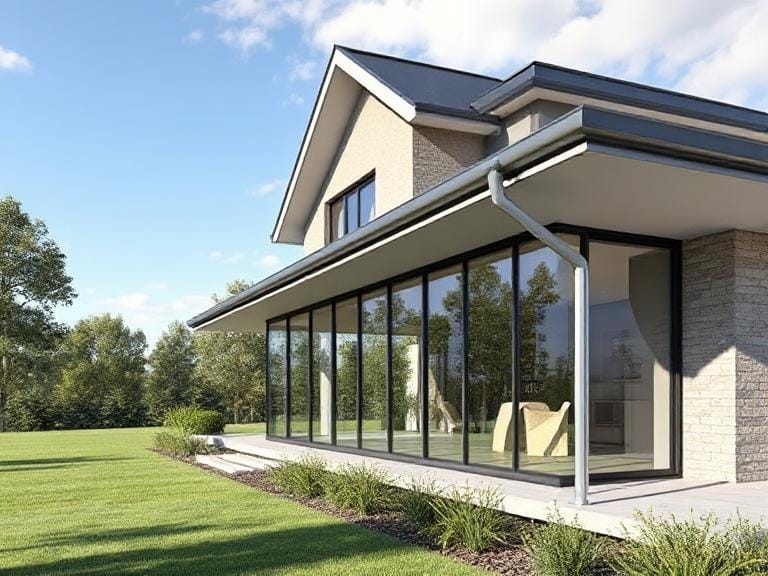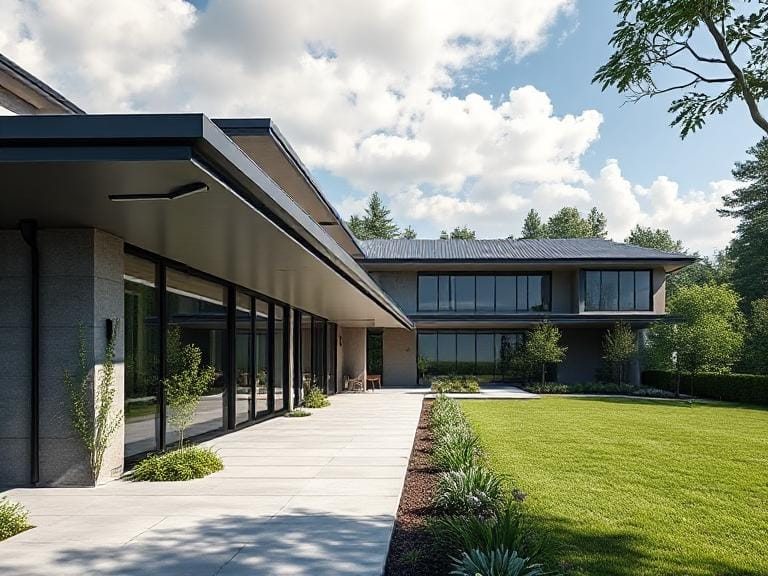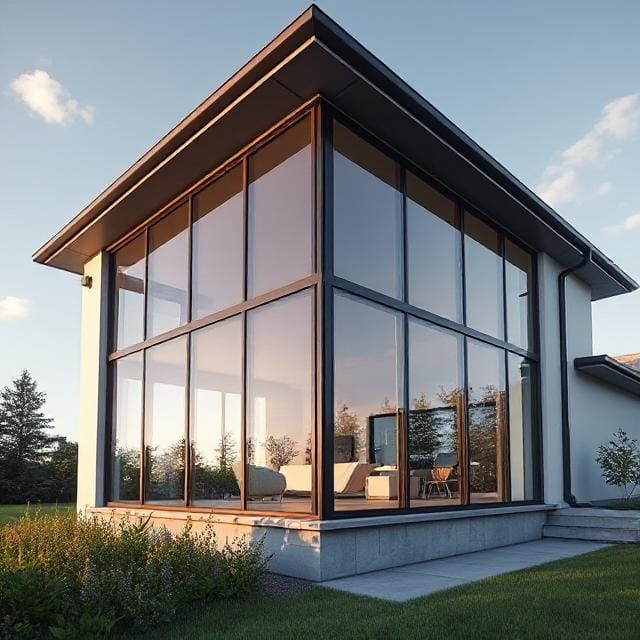How to Prevent Ice Dams With Proper Eavestrough Maintenance
Ice dams are a common winter phenomenon that can significantly impact residential buildings. They occur when melting snow runs down a roof, then refreezes at the eaves where temperatures are colder, creating a barrier of ice. This dam effectively prevents further melting snow from draining off the roof, causing water to back up behind the dam. When this trapped water accumulates, it can infiltrate the roofing materials and, eventually, the interior of the home, leading to a myriad of water-related issues.
The formation of ice dams typically arises from a combination of factors, including inadequate roof insulation and poor attic ventilation. When the upper part of the roof is warmer than the eaves, snow melts at varying rates, facilitating the formation of ice at the colder edges. Inadequate eavestrough maintenance can exacerbate this condition; clogged gutters prevent proper drainage, adding to the likelihood of water backup. Homeowners should also be aware of the tell-tale signs of an existing ice dam, which include icicles hanging from the roof edge and water stains on interior ceilings or walls.
The consequences of neglecting ice dams can be severe. Water leaks due to melting ice can cause structural damage, mold growth, and compromised insulation, resulting in a significant increase in repair costs. Moreover, the presence of ice dams can lead to increased energy expenses as heating systems work harder to maintain indoor temperatures. In some instances, the weight of the ice can even damage roofing materials or cause gutters to detach from the house. Therefore, it is essential for homeowners to not only understand the phenomena of ice dams but also to implement effective preventative measures, ensuring that their eavestroughs and roofing systems remain functional during harsh winter conditions.
The Role of Eavestroughs in Ice Dam Prevention
Eavestroughs, commonly referred to as gutters, play a pivotal role in managing roof drainage and significantly contribute to the prevention of ice dams. Their primary function is to collect rainwater and melting snow from the roof, channeling it safely away from the building’s foundation. When eavestroughs function correctly, they ensure that water does not pool on the roof or flood the landscaping around the foundation, which can lead to structural damage over time. The importance of maintaining clear and unobstructed gutters cannot be overstated, especially during the winter months when the risk of ice dams increases.
When eavestroughs become clogged with debris such as leaves, twigs, or dirt, water cannot flow freely through the system. This blockage can cause water to back up onto the roof, potentially leading to leaks and significant water damage. Furthermore, as temperatures dip, accumulated water can freeze, forming ice blocks in the gutters. This ice buildup can extend to the roof itself, creating conditions ripe for ice dams. Proper eavestrough maintenance, therefore, is essential in preventing these issues, as it promotes optimal water flow away from the roof and ensures drainage systems do not become overwhelmed.
Effective eavestrough systems operate in conjunction with roofing systems to mitigate the risk of ice accumulation. A well-designed roof with a proper pitch facilitates quick water runoff, while the eavestrough directs this water away from vulnerable areas. Additionally, installing heat cables in the gutters can help maintain a free flow of water during freezing conditions, preventing ice formation. In essence, the eavestroughs deliver a comprehensive approach to managing moisture, reinforcing the structural integrity of the house and significantly reducing the chances of ice dam formation in winter. Thus, it is crucial to prioritize regular maintenance and inspections of the eavestroughs to avert costly repairs and ensure the longevity of the roofing system.

Essential Eavestrough Maintenance Tips
Proper maintenance of eavestroughs is critical in preventing ice dams and ensuring the effective drainage of water from your roof. One of the foremost practices involves regular cleaning. It is advisable to inspect and clean your eavestroughs at least twice a year, ideally during the spring and fall. Remove leaves, twigs, and other debris that can obstruct water flow. Clogged eavestroughs can lead to water pooling, which increases the risk of ice formation during colder months.
Alongside regular cleaning, conducting thorough inspections for damage is equally important. Check for cracks, rust, or sagging sections, as these issues can impede the functionality of your eavestroughs. Any damaged components should be repaired or replaced promptly to ensure that water is directed away from your home’s foundation effectively.
Ensuring that your eavestroughs are correctly sloped and aligned can significantly enhance their performance. A slope of approximately 1/4 inch for every 10 feet is recommended to facilitate efficient drainage. Misalignment not only affects water flow but can also contribute to the formation of ice dams if water collects in particular areas. If you’re unsure about the correct slope, consulting a professional may be beneficial.
In regions prone to heavy snowfall, installing heating cables within the eavestroughs can prevent the formation of ice. These cables can help melt snow and ice accumulation, safeguarding the drainage system. It is crucial to check these cables regularly to ensure they are functioning correctly, especially before the winter season begins.
Lastly, implementing seasonal maintenance checks before winter can significantly decrease the likelihood of ice dams. These periodic assessments allow homeowners to address potential issues proactively. By following these eavestrough maintenance tips, you can significantly reduce the risk of ice dams and ensure that your roofing system remains efficient throughout the year.
When to Seek Professional Help
Proper maintenance of eavestrough is essential for preventing ice dams, yet there are instances when the situation may necessitate professional intervention. One of the primary indicators that it is time to seek professional help is the presence of extensive damage. This may manifest as significant leaks, warped or sagging gutters, or detached sections that could compromise the system’s effectiveness. Regular inspections are advisable to spot these issues early, but if considerable damage is noted, it is prudent to consult a qualified contractor.
Safety is another crucial reason to hire a professional for eavestrough maintenance. Working on high roofs involves various risks, including potential falls or accidents caused by improper use of ladders. If you do not have extensive experience or proper equipment for high-altitude work, it is wise to engage a professional who is trained and equipped to handle such situations safely. They employ necessary safety measures and possess the expertise to ensure that the repairs or replacements are adequately handled.
There are also scenarios where DIY methods may prove ineffective. For instance, if ice dams have formed due to blockages or improper drainage, attempting to remove them without proper knowledge may cause additional damage to the roof or eavestrough system. In such cases, a professional will not only address the immediate concern but will also evaluate underlying causes, providing a long-term solution to prevent recurrence.
When selecting a contractor for eavestrough services, it is essential to conduct thorough research. Look for professionals with proper licensing, insurance, and positive reviews from previous clients. Obtaining multiple quotes allows for comparison, ensuring that the chosen service is both competent and reasonably priced. Ultimately, recognizing the signs indicating the need for professional help can safeguard your property and enhance the longevity of your eavestrough system.







